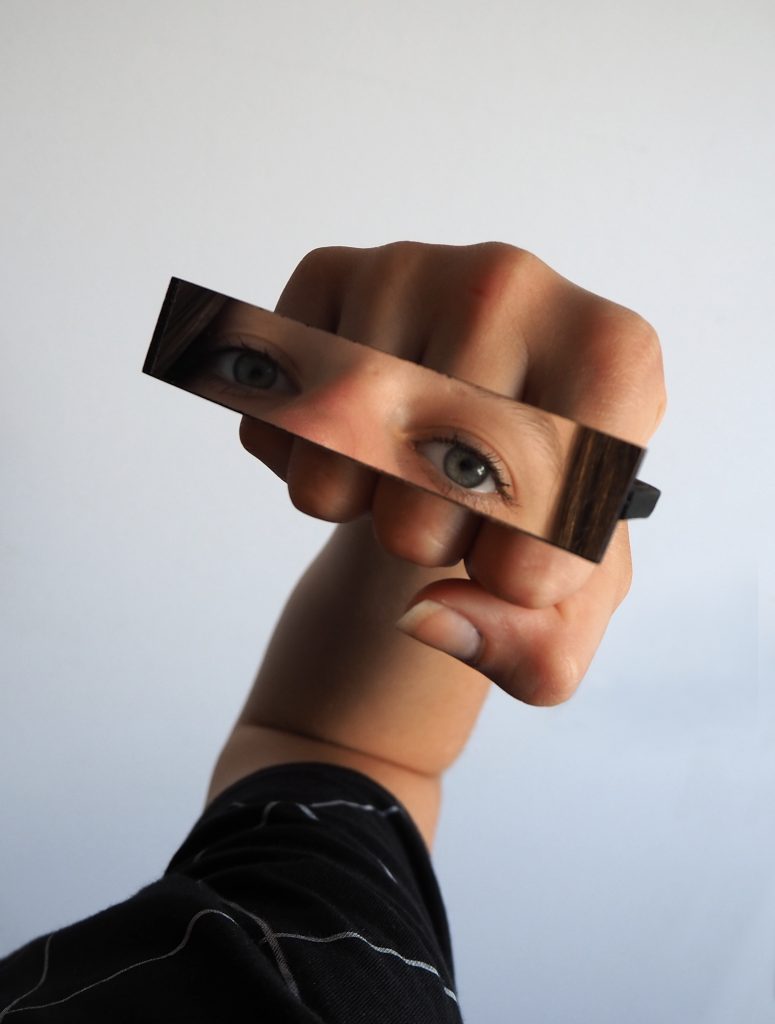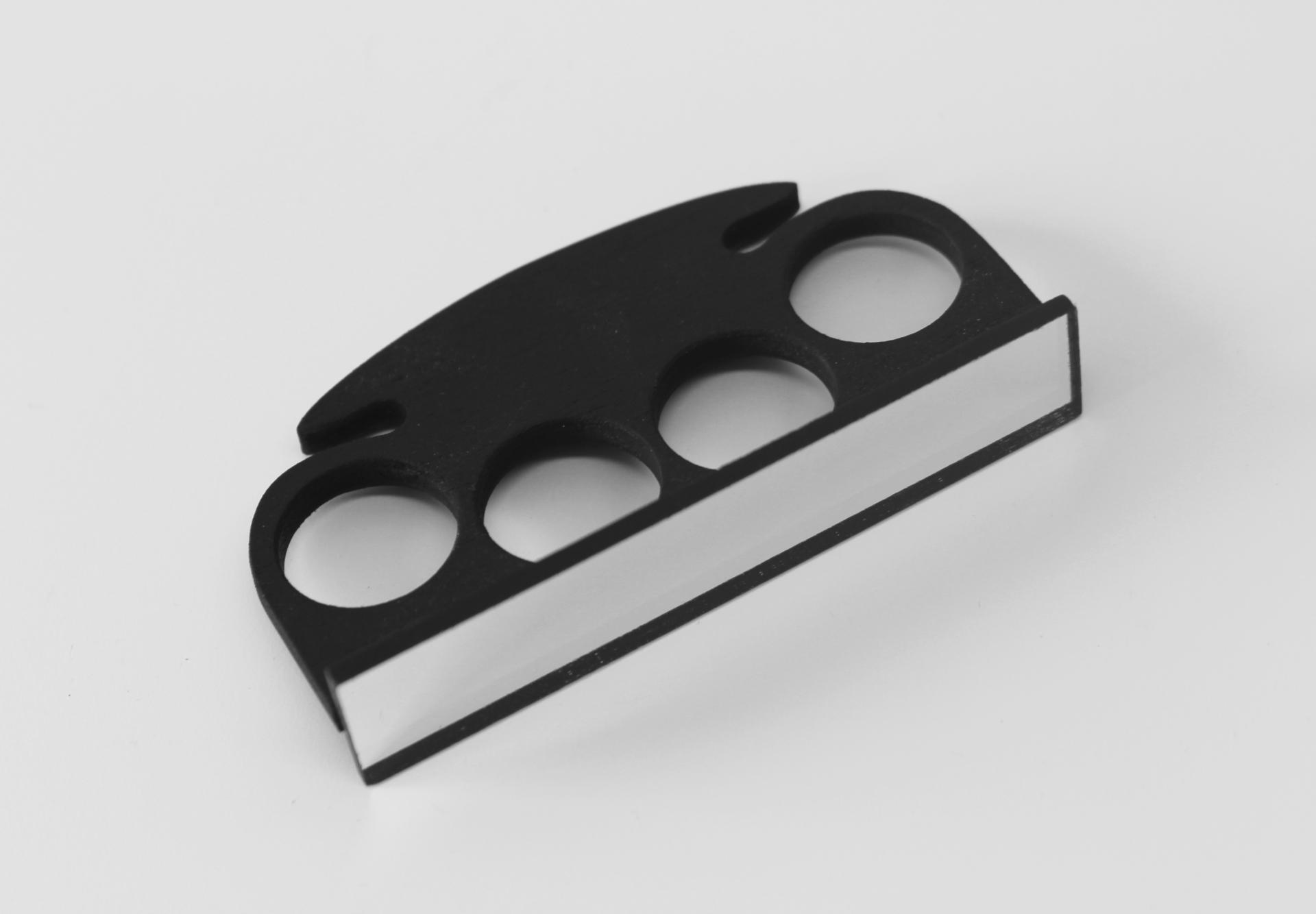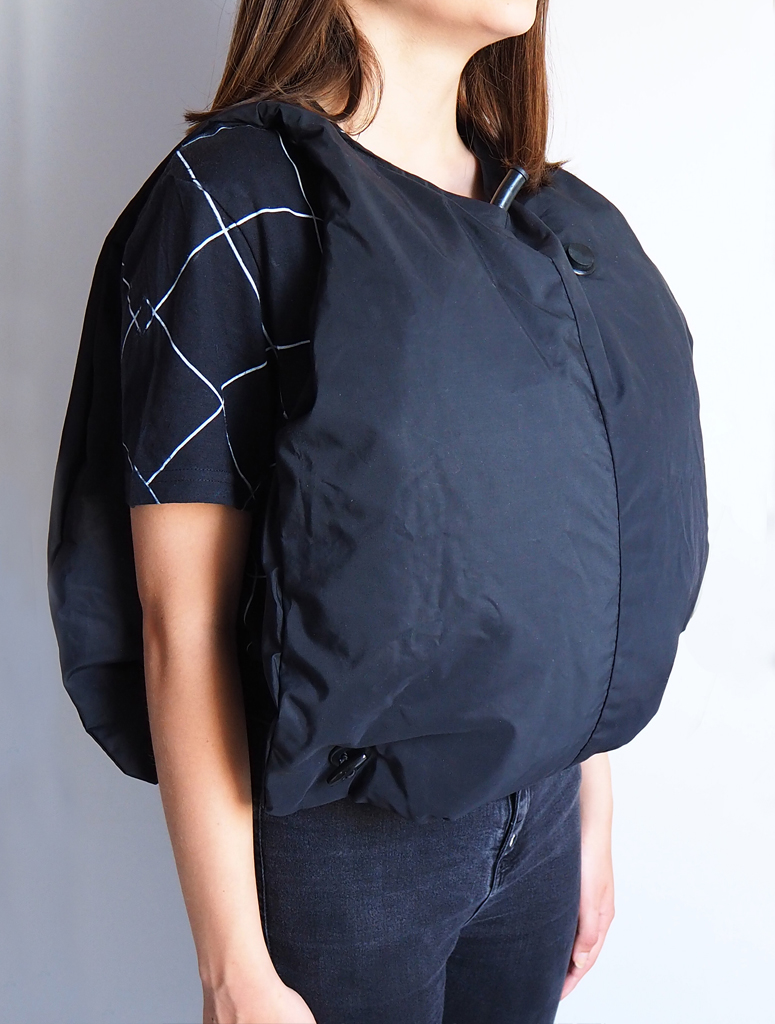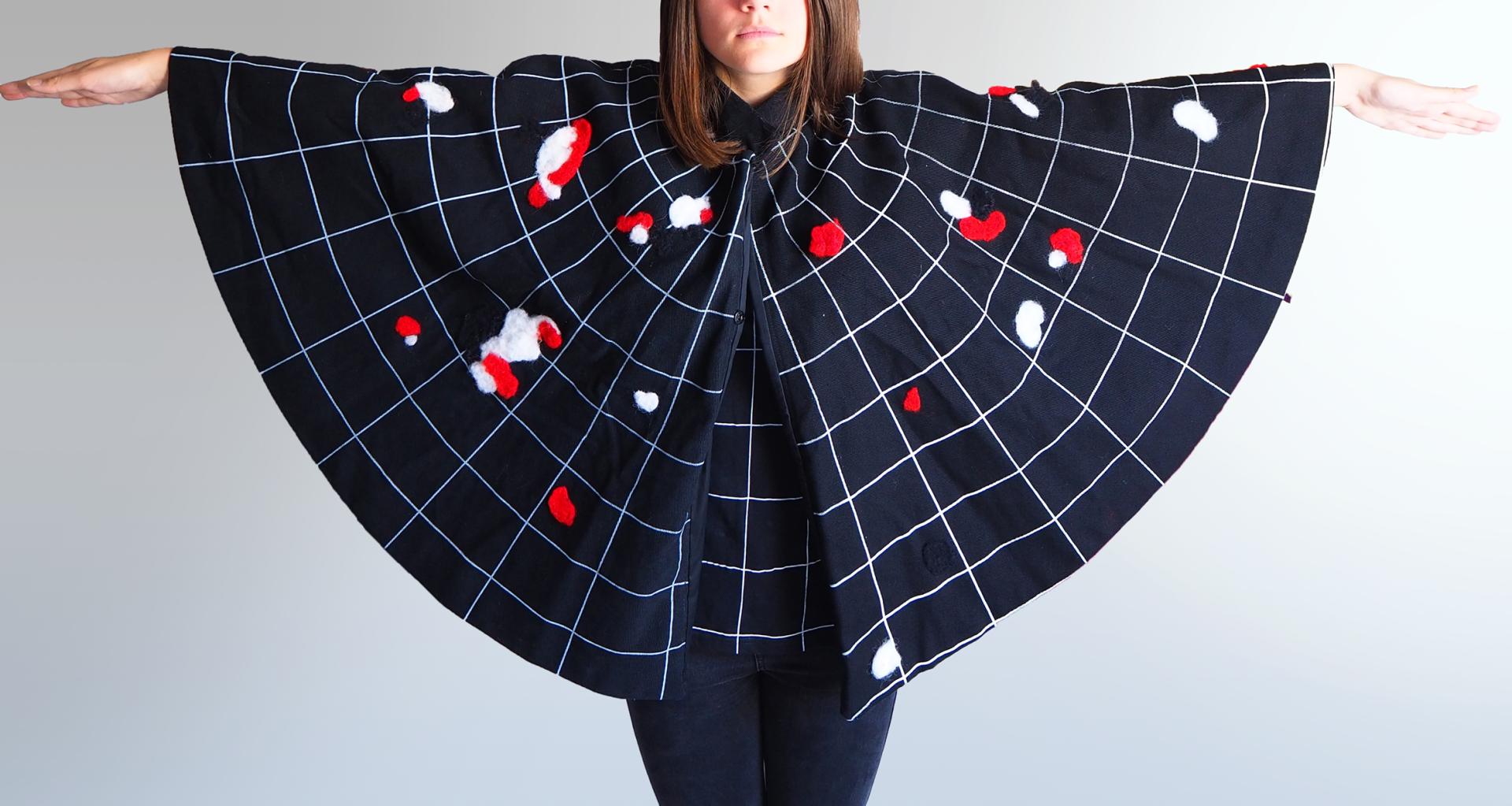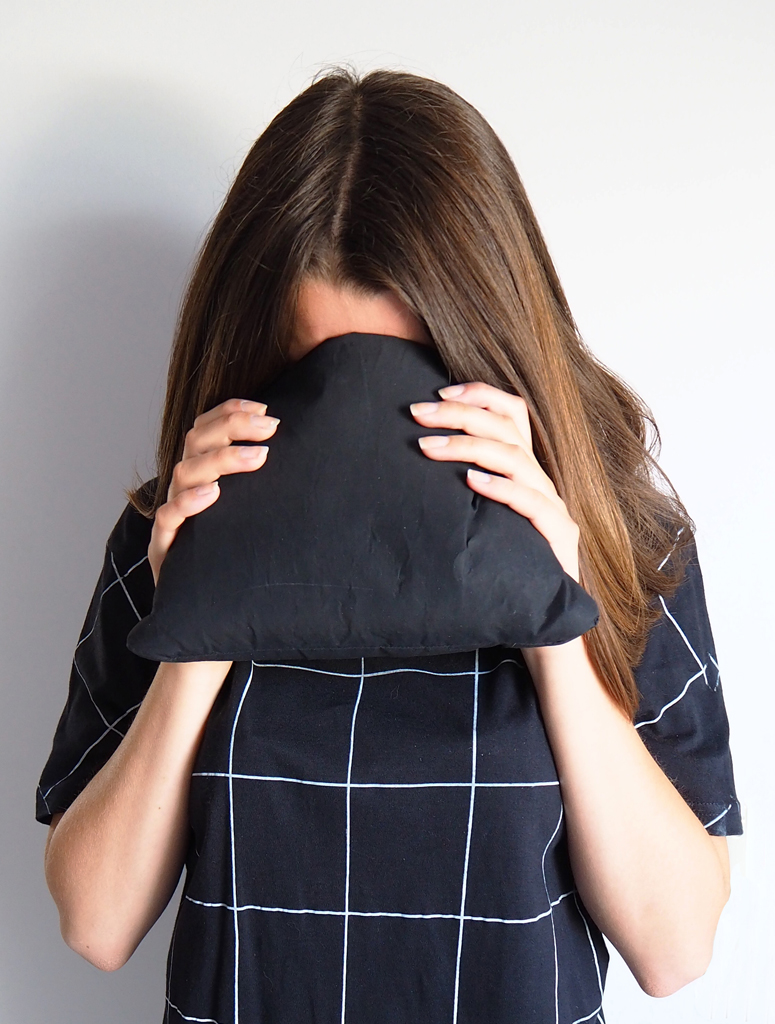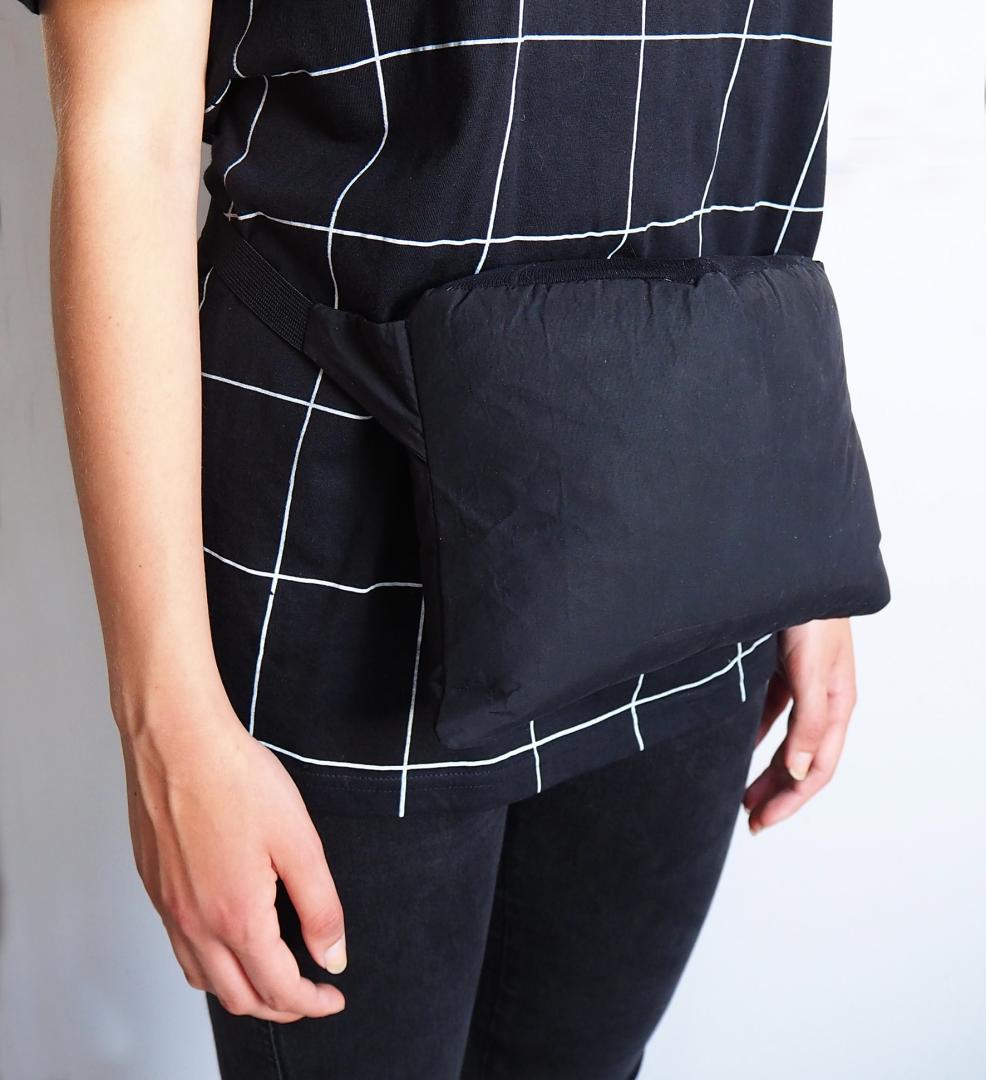Counterphobic Objects
Basic information
Project Title
Full project title
Category
Project Description
htzhtzh
Geographical Scope
Project Region
Urban or rural issues
Physical or other transformations
EU Programme or fund
Which funds
Description of the project
Summary
This project is the result of a reflection on phobias in the urban area in order to improve everyone’s comfort. The way in which we interact in cities has psychological repercussions of different severities: agoraphobia, claustrophobia, social phobia... To relieve these contemporary ills, I’m designing counterphobic objects. After a study on the subject, four concepts are in development.
Mue is a black cape, silk-screened with a white strip. Upon each exchange with external persons, and depending on the emotion felt, the individual who is wearing it will affix a piece of carded wool on the strip. The colour, the location and the size of the intervention depends on the anxiety level. Week after week, a pattern forms on the cape. It becomes a second skin, a testament to the phobic person’s progress and their relationships with
others.
When going home, there are many women who don’t feel safe. The fear of being attacked is ever-present. Ajna becomes our third eye. It’s a hybridisation between knuckles and a rear-view mirror. It allows you to monitor your surroundings and to defend yourself if needed. Its presence alone can give you your confidence back.
A punching bag object, Struthio allows you let your emotions burst out silently in the urban area. The idea is that of a portable black hole which sucks in our negative emotions, our rage, our shame. Designed like a bumbag, the interior is made up of compacted wool which stifles the noise of yells.
Diodon is a jacket which works against the symptoms linked to panic attacks. It encourages a return to calm. By blowing into a tube, the phobic person’s breathing and cardiac rhythm is calmed. The fabric expands and heats up automatically. Diodon recreates the comforting pressure and warmth of a hug.
Designed to help people who are suffering, all of these objects question our relationships with others, with space and the city.
Key objectives for sustainability
Dressing in a more responsible way is a real challenge for society in a time where the world of fashion emits more than a billion tons of greenhouse gasses per year. To get around changing fashion, the objects that I am developing are focused on a simple and/or evolving aesthetic. They’re not just for wearing, they contribute to personalised support. Signs of wear, if there are signs, they’re now longer a nuisance, but traces of the passage of time. Would you throw away your child’s damaged comfort blanket? No, it goes beyond consumer and aesthetic needs. It is a transitional, personal object which helps children in their early years. Counterphobic objects are support objects with which we cannot part. Buying a new one does not have the same value.
So that the object is respectful of the individual wearing it, it is essential to offer responsible materials which care for the body and environment. The main material is GOTS certified cotton (organic and socially responsible
production means). With the second material, carded wool, no animals are mistreated as it’s achieved from untangling raw wool from sheep shearing. The colouring is done with plant-based dyes which always respect the person wearing it.
When fast fashion provokes anger, I am offering a new way of dressing. The objective is not to respond to social etiquette, but to take care of your body and to protect yourself.
Key objectives for aesthetics and quality
During a preliminary investigation for the project, we learned that 46.1% of people asked put a lot of stock in looks from other people in the city. Urban society imposes codes on us which we force ourselves to follow. The phobic person wants to be able to blend into the masses and walk around like they’re just like everyone else. If the object is too strange, the individual wearing it will reject it. But on the other hand, if the object is too close to what we’re used to, there’s no point in it. The important thing is to find the perfect balance between aesthetic oddity and daily reality. Each of these projects must respond to this problem: how to make the use of the object possible and acceptable in any area.
The objects are predominantly black. They will sometimes be intended to be hidden and to go unnoticed. This is the case for Diodon and Struthio. The colours and/or changes of textures are only needed to highlight the function.
The decoration is not just decoration. For the Mue project, for example, I highlight a material which isn’t often showcased: carded wool. In the case of this product, I want to give it the status of a material for reflection and evolutive decoration. The aesthetics of each Mue is unique and constantly evolving. The chosen colours call on our emotions, our feelings.
How we dress gives information on our social class, the group we belong to, our personality... I have to pay special attention to the style of each object, being careful to not put the individual wearing it in danger. Push the simplicity of Diodon and Struthio further to make them almost invisible. As a contrast with a Mue which is full of decoration, a testament to the passage of time and the individual’s progress.
Key objectives for inclusion
Any individual can take over any space. Depending on their personal story, they’ll have expectations and needs which not all places can satisfy. Redesigning the urban planning of a city is impossible and may be pointless.
Each city has its history which we can't change. I’m proposing that we consider clothing and accessories as a potential solution for preserving our mental health.
The city is a sensory overload which is difficult to comprehend. Whatever the fear is, the phobic person must not flee. Exposure to fear must be progressive and not avoided or brutal. For a better city life, a change can be
found as close as possible to the person, their sensitivity and their complexity. The Counterphobic objects act as crutches and enable the individual to build on their “urban self-confidence”. Sometimes, the simple placebo aspect can give the phobic person strength. This is the case with Ajna. The jewellery is worn, but not necessarily used, the simple fact of wearing it is reassuring.
The propositions mentioned are not exclusively methods for caring for urban phobias, but they’re tools for providing new mental comfort in the city and prevent these phobic conditions.
Physical or other transformations
Innovative character
The aesthetic, sustainable and inclusive aspects are combined on several levels in the project. The Counterphobic objects are meant to be worn by people in need of mental recovery and who wish to deal with their mental issues in a positive, active, playful and evolutive way. The very fact that Counterphobic objects are objects and clothes highlights their role as an interface: facilitating the intermediation between the inner self and psyche on one hand, and collective spaces, the city and society on the other hand. With the Counterphobic objects, the social relationships get smoother: it becomes easier to reflect on one’s mental condition with the help of the object’s functioning and to interact with others from the right distance. As a direct answer to environmental issues in the fashion industry, the project aims at using sustainable materials and make them re-usable (for example the carded wool) during the whole mental recovery process. The fact that the colors used have a specific function in relationship with the emotions the user wants to share goes beyond fast-fashion trends and yet gives freedom to the user to customize their object. It is also easy to imagine that the objects are transfered to other users when the initial users do no longer need them as they can adapt both to every personality and body size. The Counterphobic objects are unlike regular manufactured objects that loose value while their lifecycle extends. Indeed, with time, the Counterphobic objects gain value for their users as they reflect the personal path they have accomplished to deal with phobias.

